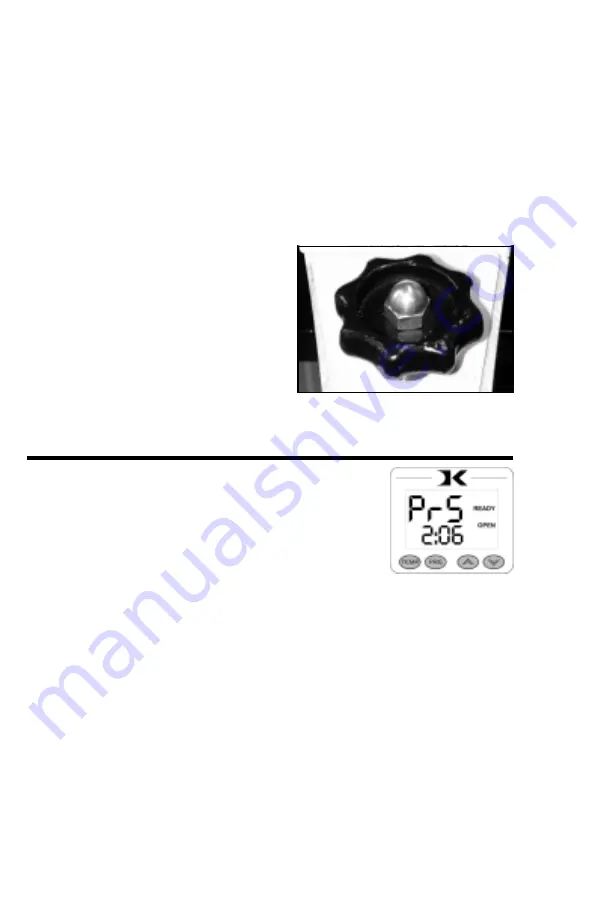
6
Setting Height / Pressure
Pressure is set manually using the large black Pressure
Adjustment Knob. There is one important rule of thumb when setting
pressure: The press MUST LOCK IN PLACE when lowering and
clamping the press. Do not simply let the platen rest on the pad. A
good solid two-handed locking force is recommended when first doing
transfers to insure good results. A “Ka-Thunk” click/clamp sound
will result when locking the press in place.
•
To decrease the pressure, turn the
pressure knob to the left,
counterclockwise.
•
The top head will rise away from
the lower table.
•
To increase the pressure, turn the
pressure knob to the right,
clockwise.
•
The top head will lower toward the
pressing table.
The Digital Height/Pressure gauge is a helpful indicator of
the current height of the top head as the operator adjusts the
pressure. It does not effect pressure or the operation of the press.
It only helps the operator know where they are in regards to
height.
•
If the pressure knob is turned rapidly enough, the display
will change to the pressure gauge display. The units of measure are a relative scale
from 0:00 to 10:00, with :02 increments.
The top will always display PRS.
•
To view the current pressure display value without changing it, simply pull the pin
up on the pressure gauge device on the pack post and let it drop back down. This
will force the PRS display to appear.
The gauge displays a reference value based on the height of the heat platen in relation
to the lower table. The closer the heat platen is to the substrate on the table, the heavier the
pressure. The further away, the lighter the pressure. The amount of actual force exerted
depends on the thickness of the item being pressed and the distance from the heat platen to
the table. The digital height/pressure gauge simply shows a relative value from 0:00 to
10:00 in fine resolution increments as to the current height of the platen.
This helps the user return to an exact pressure setting without the need of multiple
experimentations to find the proper pressure setting. By simply changing the pressure
until the correct value appears, previous heights and pressure settings for different thickness
substrates can be quickly reset without error.


































